Residents Worry About Chloramine’s Usage and Safety.
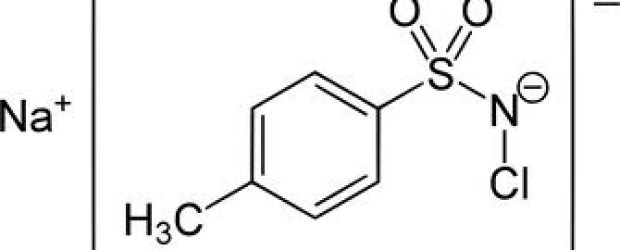

Residents Worry About Chloramine’s Usage and Safety
By Dr. Mercola
More than one in five Americans are drinking tap water that’s been treated with a derivative of chlorine known as chloramine. This disinfectant is formed by mixing chlorine with ammonia.
Chloramine is a less effective disinfectant than chlorine, but it is longer lasting and stays in the water system as it moves through the pipes that transport it to your home (a process that can take three or four days).
For this reason, chloramine is often used alongside chlorine as a “secondary” disinfectant designed to remain in your water longer – but is it safe?
Chloramines May Raise Your Water’s Level of Toxic Unregulated Disinfection Byproducts
If you receive municipal water that is treated with chlorine or chloramines, toxic disinfection byproducts (DBPs) form when these disinfectants react with natural organic matter like decaying vegetation in the source water.
DBPs are over 10,000 times more toxic than chlorine, and out of all the other toxins and contaminants present in your water, such as fluoride and miscellaneous pharmaceutical drugs, DBPs are likely the absolute worst of the bunch.
Already, it’s known that trihalomethanes (THMs), one of the most common DBPs, are Cancer Group B carcinogens, meaning they’ve been shown to cause cancer in laboratory animals. They’ve also been linked to reproductive problems in both animals and humans, such as spontaneous abortion, stillbirths, and congenital malformations, even at lower levels. These types of DBPs can also:
Weaken your immune system
Disrupt your central nervous system
Damage your cardiovascular system
Disrupt your renal system
Cause respiratory problems
One of the benefits often touted about chloramines is that they produce lower levels of regulated DBPs, such as THMs, compared to chlorine. They still produce them, just at lower levels.
In 1998, the U.S. Environmental Protection Agency (EPA) published its Stage 1 Disinfection Byproducts Rule, which required water treatment systems to reduce the formation of DBPs. This has led to an increasing number of treatment plants switching from chlorine to chloramine1 …
Many believe this makes chloramine the superior choice in terms of safety, but what is less publicized is that compared to chlorine, water treated with monochloramine (the most common form of chloramine used to disinfect drinking water) may contain higher concentrations of unregulated disinfection byproducts – the risks of which are unknown.2
Considering that many water utilities treat their water with both chlorine and chloramine, you may be getting the most of both regulated and unregulated DBPs in your drinking water, shower and bath (the DBPs that enter your body through your skin during showering or bathing also go directly into your bloodstream). There are, in fact, as many as 600 different toxic DBPs that have been identified, and to which you may be exposed through treated water.3
Higher Lead Levels in Water Linked to Chloramines
There are other issues with chloramine in your water that you should be aware of, like its potential to extract lead from old water pipes. For example, when you combine chloramines with the fluoride (hydrofluorosilicic acid) added to most of the U.S. water supply, they become very effective at extracting lead from old plumbing systems—essentially, together, they promote the accumulation of lead in the water supply!
“In fact the two of them have been combined, and I believe patented to be put together so that they could extract lead,” said fluoride activist Jeff Green.
Lead, a known toxin to your brain and nervous system, is so toxic that it has been banned in gasoline and children’s toys, and lead paint hasn’t been in use since 1978. But even the U.S. Centers for Disease Control and Prevention acknowledges that when chlorine is replaced with chloramines in drinking water, it raises not only the amount of lead that leaches into water, but the blood lead levels of children who consume it!
“When the free chlorine was replaced with chloramines, the transformed highly insoluble lead scale minerals were no longer stable and dissolved. Therefore, a substantial level of lead was released from the lead service lines into drinking water at the tap.
CDC reviewed the relationship between BLLs [blood lead levels] in children, the presence of a lead service line, and water disinfection practices in DC during 1998–2006. The study reported that the presence of a lead service line was associated with higher BLLs in children. This relationship was most pronounced during 2001 through June 2004, when chloramines were used to disinfect the drinking water without adequate corrosion control.
An observational study in which the BLLs of children were matched to population-based data of water lead levels during periods when water disinfection practices changed in DC concluded that the increase in water lead levels was associated with an increase in the BLLs of children.”4
An analysis in Environmental Health Perspectives also found that introducing chloramines may increase the lead in drinking water, and pointed out that although anti-corrosive agents added during the treatment process are supposed to mitigate this risk, they aren’t always effective:5
“Several recent studies provided evidence that the introduction of chloramines to water systems with lead-containing pipes, fixtures, or solder may increase the amount of dissolved lead in water because of changes in water chemistry; interactions with additives such as coagulants or fluoridation agents may remove lead dioxide scales originally formed during decades of chlorine-based disinfection.
This leaching might be managed to some extent by the addition of anticorrosivity agents during the water treatment process; however, the details of all the related environmental chemistry are not fully understood and are highly dependent on the particular chemical interactions found in each water treatment and distribution system.”
Many Residents Voice Concerns Over Chloramines, Safety Studies Seriously Lacking
Residents across the United States from California and Oklahoma to Vermont have voiced concerns over chloramine safety, wondering whether it’s truly as safe as water utilities would like you to believe. At the very least, the chemical has been linked to skin irritations and rashes, noted Robert Howd of the California EPA:6
“ …chloramines, like chlorine, can irritate sensitive mucus membranes, and could potentially cause skin irritation. When some utilities have switched to chloramine, there have been user reports of bad-tasting water, a bad feel of the water on the skin, skin irritation, and other symptoms.”
Furthermore, according to the EPA, no scientific studies on chloramine’s effects on your skin or respiratory tract via inhalation have been conducted. And while some cancer studies have been, they are so limited that they are not able to conclusively determine if chloramine might, in fact, cause cancer.7
This is concerning, since exposure to chloramine in your indoor air while bathing and showering may represent your greatest route of exposure, even more so than drinking it.
Also the cancer studies on chloramine itself are so limited that they cannot be used to determine if chloramine is a carcinogen, and its environmental effects are worrisome. Chloramine is toxic to frogs and other amphibians, reptiles, fish and other aquatic and marine life, to the extent that you cannot use chloramine-treated water to fill up a fish tank or backyard fish pond. As the water runs into streams, rivers and other marine areas, it could be disastrous for the marine life.
So while water utilities stand to save money by cutting chlorine costs with chloramine, the benefits to the public are far less clear. Other potential concerns include:8
Because of chloramine’s corrosive nature, it has been linked to pinhole pitting in copper water pipes, which can lead to small water leaks and mold growth in your home
Chloramine also corrodes rubber toilet flappers and gaskets, rubber hoses, and rubber fittings in dishwashers and water heaters, leading to costly home repairs
Chloramine de-elasticizes PVC pipes, making them brittle and accelerating the leaching of possible carcinogens from the plastic into drinking water
Chloramine is Difficult to Remove From Your Water, But it Can be Done
Chloramine cannot be removed by quick boiling your water or letting it sit out in an open container (as is sometimes recommended for chlorine). A carbon filter can remove the chemical from your drinking water, but that leaves your shower and bath – a significant route of exposure — without protection. It would be helpful to take as cold a shower as possible as heat will convert more of the chemicals to a toxic gas. Additionally shorter showers will also obviously further limit your exposure.
Because of the high flow rate and large volume of water passing through your shower, there is no showerhead filter on the market that will effectively remove all chloramine. A whole-house filtration system is therefore your best choice to remove chlorine, chloramine, ammonia, DBPs and other contaminants from all of your water sources (bath, shower and tap).
If you don’t have the resources for a whole-house filtration system at this time, there are a couple of other tricks you can try. AtFindaSpring.com you can identify local springs where you can get pure, chloramine-free drinking water for a minimal cost. You can also try:9
Adding fruit, such as slices of peeled orange, to a 1-gallon water pitcher, which will help neutralize chloramine in about 30 minutes
Dissolving a 1,000-mg vitamin C tablet into your bath water, which will neutralize the chloramine in an average-size bathtub
If you’re not sure whether your city uses chloramine as a water disinfectant, contact your local water utility. And if you have concerns, voice them to your municipality. There are other disinfection techniques available, such as ultraviolet light and micro-filtration, which appear to be much safer, and may be an option in your area if enough people get involved to prompt change. This recently occurred in Albemarle County in Central Virginia, which dropped the consideration of chloramines after negative public feedback — and is now looking at the use of granular-activated carbon as a secondary water disinfectant.
1 Environ Health Perspect. 2007 February; 115(2): 221–225.
2 U.S. Environmental Protection Agency, Does Monochloramine Cause Cancer?
3 Mutation Research 2007 Nov-Dec;636(1-3):178-242. Epub 2007 Sep 12.
4 CDC MMWR August 10, 2012
5 Environ Health Perspect. 2007 February; 115(2): 221–225.
6 EPA Risk Analysis Committee Meeting, Arlington, Virginia, October 29-31, 2008
7 Citizens Concerned About Chloramine, Overview
8 Citizens Concerned About Chloramine, Overview
9 EcologyCenter.org
10 Charlottesville Tomorrow August 28, 2012
Resources:
 Mystery Stains in Salt Generator Pools.October 16, 2013
Mystery Stains in Salt Generator Pools.October 16, 2013
 How safe is your indoor swimming pool?September 4, 2013
How safe is your indoor swimming pool?September 4, 2013
 Mystery Stains in Salt Generator Pools.October 16, 2013
Mystery Stains in Salt Generator Pools.October 16, 2013 Skin Problems Caused by Swimming Pool Bromine.February 26, 2012
Skin Problems Caused by Swimming Pool Bromine.February 26, 2012 Bladder Cancer Linked To Swimming Pool Chlorine.February 29, 2012
Bladder Cancer Linked To Swimming Pool Chlorine.February 29, 2012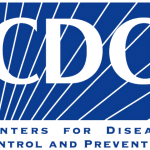 Swimming Pool Chemicals Cause Thousands of Injuries.March 6, 2012
Swimming Pool Chemicals Cause Thousands of Injuries.March 6, 2012















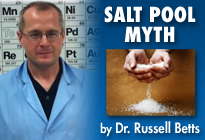
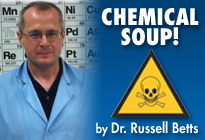
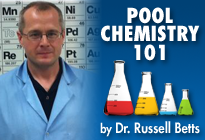





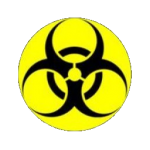











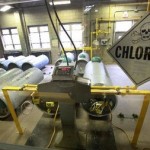

Get Social